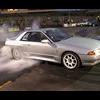Torque Of Sr20 Vs Rb20....confusion...
Announcements
-
Similar Content
-
Latest Posts
-
That's a function of the fuel pressure reg, not the pump. The pump can do more, needs to be able to do more. The reg keeps the pressure in the rail constant above whatever the manifold pressure is.
-
You need enough post count to have PMs enabled. It will come. They are not the same. The NA box is the skinny little box and the turbo box is the big heavy one, and the yokes are not interchangeable.
-
So, you're not talking about rebuilding the dampers, just putting new tops on them? You just need new tops and a spanner.
-
Hi All, Does anyone know how or who (shop) could rebuild my original R32 GTR Nismo struts? These are the OG logo ones that were a factory option back in the day. I've replaced them with aftermarket coilovers which are good, but the OG Nizmo struts tha i bought the car with i feel are amazing, just the rubber tops are worn and would need replacing... Plus it would make it 100 time easier for me to get the GTR fully engineered without adjustable coilovers... I was considering selling the OG suspension, but if i can get them rebuild / refurbished, I would seariously put them back on. Cheers, Tom p.s. I'm in Sydney by the way and don't mind travelling if need be to get these puppies rebuilt.
-
By TurboTapin · Posted
And here I am purposely injecting water into my engine for the steams haha
-



Recommended Posts
Create an account or sign in to comment
You need to be a member in order to leave a comment
Create an account
Sign up for a new account in our community. It's easy!
Register a new accountSign in
Already have an account? Sign in here.
Sign In Now